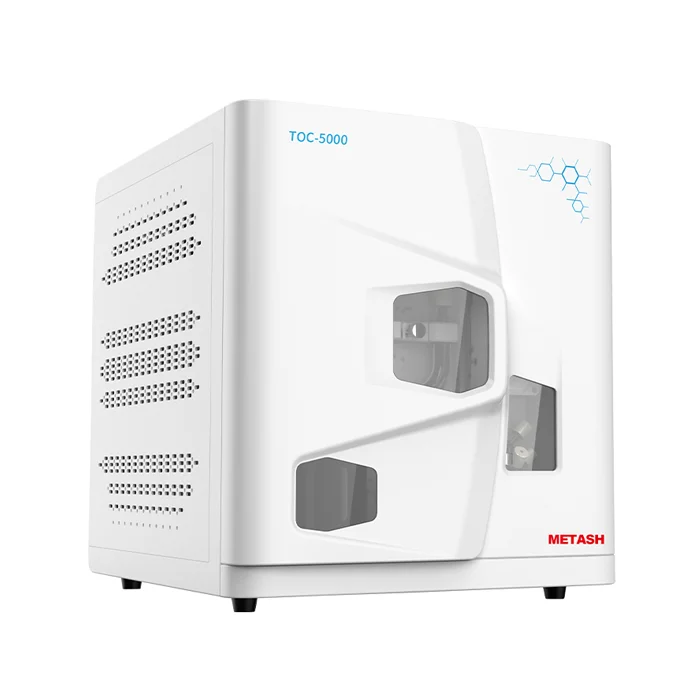- This topic is empty.
-
AuthorPosts
-
2025-10-11 at 6:36 pm #5256
In the realm of chemical engineering, the precise measurement of inorganic carbon (IC) in compounds like triethylamine is of paramount importance. This is not just a matter of academic interest but a crucial aspect of industrial processes, environmental compliance, and product quality assurance. In this blog post, as Total Organic Carbon Analyzer factory, Metash will share the methodology and results of using TOC Analyzer to determine inorganic carbon content in triethylamine.
Importance of Inorganic Carbon Measurement
Inorganic carbon is a key indicator in various industrial applications. For triethylamine, a vital organic chemical used extensively in industries such as automotive and pharmaceuticals, the accurate measurement of IC is essential. It ensures that wastewater from production processes meets environmental standards, prevents equipment corrosion, and maintains the purity of the final product. The ability to measure IC accurately can significantly impact operational efficiency and regulatory compliance.
Challenge of Triethylamine Analysis
Triethylamine presents unique challenges for chemical analysis. It is a colorless to slightly yellow liquid with a strong ammoniacal odor. Its weakly alkaline aqueous solution and reactivity with acids and oxidizing agents require careful handling. Moreover, its flammability and potential for explosive decomposition necessitate stringent safety measures. These characteristics make the precise determination of inorganic carbon in triethylamine both necessary and complex.
Utilizing the TOC Analyzer for IC Determination
To address the challenge of measuring IC in triethylamine, we employed a Total Organic Carbon Analyzer (TOC Analyzer). This instrument is designed to accurately measure the total organic and inorganic carbon content in a sample. The TOC Analyzer used in this study, the TOC 5000 RN, is equipped with advanced features such as a non-dispersive infrared detector (NDIR) and operates under specific conditions optimized for accurate IC measurement.

Experimental Setup and Conditions
The TOC 5000 RN was configured with a carrier gas flow rate of 180.0 ml/min and a pressure of 0.200 Mpa. The combustion tube temperature was set at 680℃, and platinum was used as the catalyst. High-purity oxygen (≥99.995%) served as the carrier gas. The instrument was calibrated using a standard curve prepared from sodium bicarbonate and anhydrous sodium carbonate solutions.
Sample Preparation and Analysis
For accurate measurement, the triethylamine sample was diluted with ultrapure water to a volume of 100 ml. The diluted sample was then analyzed using the TOC Analyzer. The instrument's software was programmed to measure the IC content based on the standard curve. To validate the accuracy of the measurements, a spike recovery experiment was conducted by adding a known quantity of inorganic carbon to the sample and measuring the recovery rate.
Results and Discussion
The results of the IC measurement were highly encouraging. The standard curve prepared for the TOC Analyzer showed a perfect linear relationship with a correlation coefficient (R2) of 1.0, indicating excellent calibration accuracy. The measured IC content in the triethylamine sample was 22.3541 mg/L, with a spike recovery rate of 99.76%. This high recovery rate demonstrates the reliability and precision of the TOC Analyzer in measuring IC in triethylamine.
Implications for Industry
The successful application of the TOC Analyzer in measuring IC in triethylamine has significant implications for the chemical industry. It provides a robust and accurate method for quality control, ensuring that triethylamine products meet the stringent purity requirements of downstream applications. Additionally, this method aids in environmental compliance by accurately monitoring wastewater for IC content, thereby preventing pollution and avoiding regulatory penalties.
Conclusion
The use of the TOC 5000 RN Total Organic Carbon Analyzer to measure inorganic carbon in triethylamine has proven to be highly effective. The method achieved a remarkable recovery rate of 99.76%, demonstrating its accuracy and reliability. This approach not only enhances the quality control processes in triethylamine production but also supports environmental sustainability by ensuring compliance with wastewater discharge standards. As industries continue to demand higher purity and stricter environmental regulations, the TOC Analyzer stands out as a valuable tool for chemical analysis.
For more detailed information on the TOC Analyzer and its applications, feel free to contact our team at Metash Instruments. We are committed to providing innovative solutions for chemical analysis and environmental protection.
http://www.metashcorp.com
Metash -
AuthorPosts
- You must be logged in to reply to this topic.